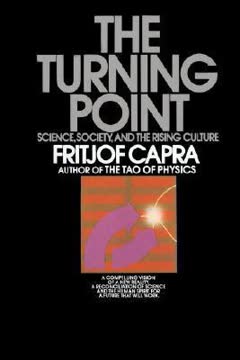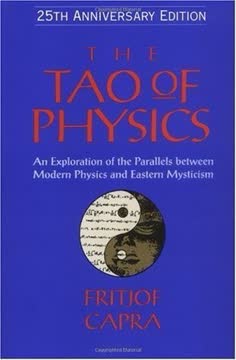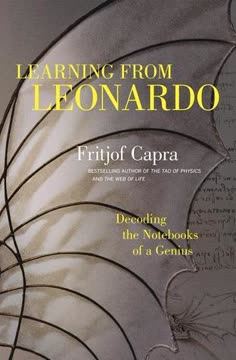Key Takeaways
1. The Global Crisis: A Crisis of Perception
The basic thesis of this book is that these are all different facets of one and the same crisis, and that this crisis is essentially a crisis of perception.
Interconnected problems. Our current global predicament—marked by high inflation, unemployment, environmental degradation, and rising violence—is not a collection of isolated issues but rather a single, multifaceted crisis. This crisis stems from a fundamental flaw in our collective understanding of reality, a "crisis of perception" that prevents us from seeing the deep interdependencies between these seemingly disparate problems. We are attempting to apply outdated conceptual models to a world that can no longer be understood through them.
Systemic challenges. The problems we face are systemic, meaning they are deeply interconnected and interdependent, making fragmented solutions ineffective. Experts in various fields often find themselves unable to solve urgent problems within their narrow disciplinary boundaries, leading to a "cupboard of ideas is bare" scenario. A resolution requires changing the very structure of the web of social and ecological relations, demanding profound transformations in our institutions, values, and ideas.
Crisis as opportunity. Drawing on ancient Chinese wisdom, the term for "crisis" (wei-ji) combines "danger" and "opportunity." This perspective suggests that our current global crisis, while dangerous, also presents an unprecedented opportunity for transformation. It is a pivotal moment in human cultural evolution, coinciding with the decline of patriarchy, the end of the fossil-fuel age, and a profound paradigm shift in our fundamental thoughts, perceptions, and values.
2. The Mechanistic Worldview's Dominance and Limits
The notion of an organic, living, and spiritual universe was replaced by that of the world as a machine, and the world-machine became the dominant metaphor of the modern era.
The Scientific Revolution. The 16th and 17th centuries witnessed a dramatic shift from an organic, spiritual worldview to a mechanistic one, largely driven by the Scientific Revolution. Figures like Copernicus, Galileo, and Newton established a new scientific method based on mathematical description, empirical observation, and analytic reasoning. This approach, while incredibly successful in understanding quantifiable properties, deliberately excluded subjective qualities like color, sound, and ethical sensibility from scientific discourse.
Cartesian Dualism. René Descartes, a pivotal figure, introduced a strict division between mind (res cogitans) and matter (res extensa). This dualism led to the view of the universe, including living organisms, as a perfect machine governed by exact mathematical laws. This mechanistic perspective provided a "scientific" sanction for the manipulation and exploitation of nature, viewing it as a passive entity to be dominated, a concept vigorously promoted by Francis Bacon.
Newtonian Synthesis. Isaac Newton completed this mechanistic framework by formulating universal laws of motion and gravity, creating a consistent mathematical theory of the world that dominated scientific thought for over two centuries. This Newtonian world-machine, composed of solid, indestructible particles interacting through forces, became the prototype for all sciences, influencing fields from biology and medicine to psychology and economics, leading to reductionist approaches that sought to understand complex phenomena by breaking them down into elementary parts.
3. Modern Physics: A Shift to Interconnectedness
The universe is no longer seen as a machine, made up of a multitude of separate objects, but appears as a harmonious indivisible whole; a network of dynamic relationships that include the human observer and his or her consciousness in an essential way.
Beyond Classical Physics. The early 20th century brought two revolutionary developments in physics—relativity theory and quantum theory—that shattered the foundations of the mechanistic worldview. These theories revealed the limitations of classical concepts like absolute space and time, elementary solid particles, and strict causality, forcing physicists to confront a strange and unexpected reality.
The Quantum Revolution. Quantum theory showed that subatomic particles are not isolated grains of matter but "probability patterns," interconnections in an inseparable cosmic web. This implies:
- Particles are not "things" but interconnections between "things."
- The world cannot be decomposed into independently existing smallest units.
- The observer's consciousness plays a crucial role in bringing about the properties of observed phenomena, blurring the Cartesian mind-matter division.
- Nonlocal connections exist, meaning events can be instantaneously correlated across vast distances, challenging classical notions of causality.
Dynamic and Interconnected Reality. Relativity theory further revealed the intrinsically dynamic nature of this cosmic web, showing that the being of matter cannot be separated from its activity; particles are dynamic patterns of energy. The bootstrap philosophy, a leading approach in particle physics, posits that nature cannot be reduced to fundamental entities but must be understood entirely through self-consistency, where all properties follow from the interrelations of the whole.
4. Life as Self-Organizing Systems
Living organisms, as we have seen, are self-organizing systems that display a high degree of stability.
Organisms vs. Machines. The systems view of life fundamentally differs from the mechanistic view by recognizing that organisms are not constructed but grow, exhibiting internal flexibility and plasticity. Unlike machines, whose activities are determined by their structure, the structure of living systems is determined by underlying processes. Their functioning is guided by cyclical patterns of information flow (feedback loops), making breakdowns usually multi-causal rather than attributable to a single point of failure.
Self-Organization and Dynamic Stability. Living organisms are self-organizing systems, meaning their order is established internally, not imposed by the environment. They are open systems, maintaining themselves far from equilibrium through continuous exchange of energy and matter (metabolism). Their stability is dynamic, characterized by:
- Continuous self-renewal and recycling of components.
- Maintaining overall structure despite constant change.
- Adaptation to environmental changes through stress reactions, somatic changes, and genotypic evolution.
Interconnectedness and Co-evolution. Organisms are deeply embedded in and interdependent with their environment, forming complex, multi-leveled ecosystems. The tendency to associate, establish links, and cooperate is an essential characteristic of life, often leading to symbiotic relationships. The planet itself, through the Gaia hypothesis, can be seen as a single, self-regulating living organism, where life and environment co-evolve, challenging the reductionist view of nature as merely a collection of resources to be exploited.
5. Holistic Health: Beyond the Biomedical Model
The human body is regarded as a machine that can be analyzed in terms of its parts; disease is seen as the malfunctioning of biological mechanisms which are studied from the point of view of cellular and molecular biology; the doctor's role is to intervene, either physically or chemically, to correct the malfunctioning of a specific mechanism.
Limitations of the Biomedical Model. Modern scientific medicine, rooted in the Cartesian paradigm, views the human body as a machine and disease as a mechanical breakdown. This "biomedical model" focuses on specific biological mechanisms, often neglecting the patient as a whole person and the psychological, social, and environmental aspects of illness. This reductionist approach has led to:
- Over-reliance on drugs and surgery, often treating symptoms rather than underlying causes.
- Exorbitant costs without significant improvements in overall population health.
- A neglect of the phenomenon of healing, which is inherently holistic.
Health as Dynamic Balance. A holistic approach defines health as a dynamic balance involving physical, psychological, and social aspects, and the organism's interactions with its natural and social environment. This view aligns with ancient traditions like Hippocratic and Chinese medicine, which emphasized:
- The body's innate healing power.
- The importance of environmental influences.
- The interdependence of mind and body.
- Illness as a consequence of disharmony and imbalance, often stemming from a lack of integration.
Psychosomatic Self-Healing. Illness is seen as a multidimensional phenomenon, often a "problem solver" for unreleased stress, manifesting physically, psychologically, or socially. Psychosomatic self-healing, supported by phenomena like the placebo effect, emphasizes the patient's active participation and responsibility in the healing process. Therapies should be multidimensional, minimally intrusive, and aim to restore the organism's natural tendency to return to balance, integrating physical, psychological, and social interventions.
6. The Multilevel Nature of the Human Psyche
Psyche cannot be totally different from matter, for how otherwise could it move matter? And matter cannot be alien to psyche, for how else could matter produce psyche?
Beyond Newtonian Psychology. Classical psychology, including behaviorism and Freudian psychoanalysis, largely adopted Newtonian mechanistic models, struggling with the mind-body problem and often reducing mental phenomena to physical mechanisms or isolated drives. Carl Gustav Jung, however, broke with this tradition, developing a psychology consistent with modern physics and systems theory. He viewed the psyche as a self-regulating dynamic system, emphasizing its totality and its relation to the wider environment.
The Collective Unconscious. Jung's most significant contribution was the concept of the collective unconscious, a deeper stratum of the psyche common to all humankind, containing "archetypes" or universal dynamic patterns. This concept implies a fundamental link between the individual and humanity, and even the cosmos, aligning with the systems view of mind as a property of complex, interconnected living systems, not just individual brains.
Spectrum of Consciousness and Healing. Modern psychology, particularly humanistic and transpersonal psychology, has expanded the understanding of consciousness beyond the ego, recognizing multiple levels of experience (psychodynamic, biosocial, existential, transpersonal). Mental illness is often seen as a failure to integrate these experiences or as a symptom of disturbed communication within social systems (e.g., family). Therapy, therefore, becomes a multilevel process, aiming to facilitate self-exploration, integrate conscious and unconscious aspects, and help individuals find meaning and balance within their broader cosmic context.
7. Economics for a Sustainable, Ecological Future
The economy is a living system composed of human beings and social organizations in continual interaction with one another and with the surrounding ecosystems on which our lives depend.
Outdated Economic Models. Conventional economics, deeply rooted in the Cartesian paradigm, treats the economy as separate from its ecological and social context. Its models, based on narrow definitions, quantitative measures (like GNP), and outdated notions of free markets and unlimited growth, are increasingly unrealistic and contribute to global problems like inflation, unemployment, and environmental degradation. This fragmented approach fails to account for social and environmental costs, externalizing them from economic calculations.
Systems Economics. A new, ecological approach views the economy as a living system, inherently dynamic and interconnected with human beings, social organizations, and ecosystems. This perspective emphasizes:
- Nonlinear dynamics: Economic processes are characterized by fluctuations and feedback loops, not simple linear cause-and-effect.
- Optimal scale: Every structure and institution has an optimal size; maximizing single efficiencies (e.g., GNP) can destroy the larger system.
- Recycling and regeneration: Economies must align with natural cycles of resource use and recycling.
- Multidisciplinary analysis: Economic phenomena require insights from ecology, sociology, political science, and psychology, moving beyond the sole reliance on monetary measures.
Redefining Wealth and Progress. This shift necessitates a redefinition of wealth, productivity, and profit to include social and environmental well-being, not just material accumulation. Energy and entropy become crucial variables for analysis, highlighting the inefficiency of resource-intensive activities. The goal is to move towards a sustainable economy that fosters social justice, ecological balance, and human enrichment, rather than undifferentiated growth.
8. The Dark Side of Undifferentiated Growth
Our obsession with economic growth and the value system underlying it have created a physical and mental environment in which life has become extremely unhealthy.
Environmental Degradation. The relentless pursuit of undifferentiated economic and technological growth has led to severe environmental consequences. This includes:
- Toxic chemical waste: Thousands of dangerous dumpsites, poisoning water and air, a direct result of profitable but irresponsible industrial practices.
- Air pollution: Acid rain from coal-burning plants, devastating ecosystems far from the source.
- Resource depletion: Rapid exhaustion of fossil fuels, metals, forests, and fish reserves, driven by competitive consumption.
Nuclear Madness. Nuclear power, both weapons and reactors, represents the most extreme manifestation of this growth obsession. It is inherently linked to global destruction, poses unprecedented environmental hazards (radioactive waste toxic for millennia), and concentrates political and economic power in the hands of a small elite. This "technological Vietnam" is driven by an obsession with self-assertion and control, rather than genuine energy needs or security.
Health Hazards of Consumption. The economic system's drive for expansion also creates health hazards through the very products it sells. Over-processed, artificial foods, excessive drug use (both prescription and non-prescription), and manipulative advertising contribute to:
- Unhealthy diets and related illnesses.
- Widespread drug abuse and adverse drug reactions.
- A culture that prioritizes profit over public health, exemplified by the pharmaceutical and petrochemical industries' influence on medicine and agriculture.
9. The Imperative of a Value System Shift
What we need, to overcome our multifaceted crisis, is not more energy but a profound change of values, attitudes, and life styles.
Cultural Imbalance. The pervasive mechanistic worldview and its associated "yang-oriented" value system (rationality, competition, expansion, domination) have led to a profound cultural imbalance. This imbalance manifests as a loss of integrity and balance in our physical, psychological, and spiritual well-being, generating numerous symptoms of ill health at individual, social, and ecological levels.
Beyond Materialism. The current crisis demands a fundamental shift from values of self-assertion and competition to cooperation and social justice, from expansion to conservation, and from material acquisition to inner growth. This is not a restrictive change but a liberating and enriching one, addressing existential needs for leisure, contemplation, peace of mind, love, community, and self-realization that are often neglected in a purely economic pursuit of wealth.
Re-evaluating Work and Scale. This value shift requires re-evaluating concepts like "work," moving beyond the identification of work solely with paid jobs to recognizing the value of unpaid activities and meaningful, dignified labor. It also necessitates a return to a "human scale" in our technologies and institutions, decentralizing populations and industries, dismantling obsolete corporate giants, and fostering flexible, resource-conserving "soft" technologies that prioritize human and ecological well-being over mere bigness and profit.
10. The Rising Culture: A Turning Point for Humanity
The social movements of the 1960s and 1970s represent the rising culture, which is now ready for the passage to the solar age.
Emergence of New Movements. The dissatisfaction with the existing system has fueled a powerful "rising culture," characterized by numerous citizen movements and alternative networks. These movements, emerging from the 1960s and 70s, are increasingly converging, moving beyond single issues to address fundamental systemic concerns like social justice, ecological balance, self-realization, and spirituality.
Towards a Solar Age. This rising culture is driving the transition to a "solar age," not just technologically but as a profound societal transformation. This involves:
- Soft energy path: Prioritizing energy conservation, intelligent use of bridging fuels, and rapid development of renewable solar technologies (e.g., solar heating, photovoltaics, biomass).
- Decentralization: Shifting from centralized, capital-intensive, and polluting technologies to small-scale, decentralized, labor-intensive, and environmentally benign solutions.
- Restructuring information: Reclaiming mass media from corporate control to promote ecological awareness and new values.
Deep Ecology and Spiritual Awakening. The new vision is rooted in "deep ecology," recognizing the oneness of all life and the interdependence of its manifestations, leading to an intuitive and spiritual awareness. This is supported by feminist spirituality, which embodies an ecological attitude towards life and challenges patriarchal norms. These movements, through their non-hierarchical, non-bureaucratic, and non-violent approaches, are forming powerful coalitions that represent a winning majority, poised to turn the paradigm shift into political reality.
Last updated:
Review Summary
The Turning Point receives mostly positive reviews for its holistic approach to science, society, and culture. Readers appreciate Capra's critique of Cartesian-Newtonian paradigms and his advocacy for systems thinking. Many find the book's ideas still relevant decades after publication, praising its interdisciplinary perspective on complex global issues. Some criticize it as dated or oversimplified, but most view it as thought-provoking and potentially transformative. Reviewers often mention the book's exploration of quantum physics, ecology, and Eastern philosophy in relation to societal challenges.
Similar Books
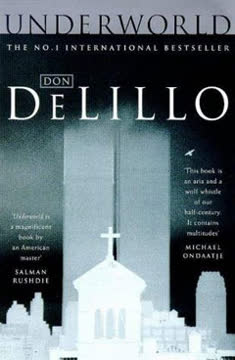


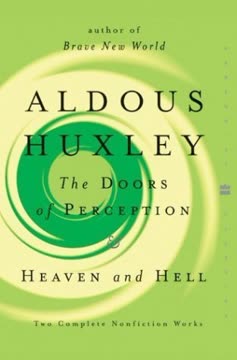


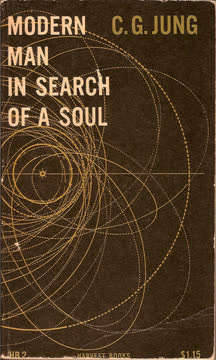

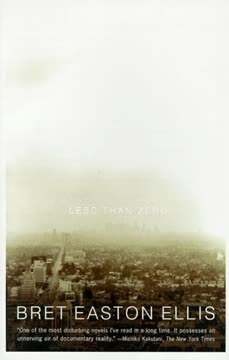
Download PDF
Download EPUB
.epub digital book format is ideal for reading ebooks on phones, tablets, and e-readers.
